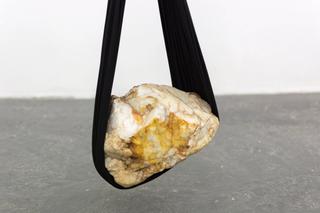

As We Pull the Earth Toward Ourselves
Yvette James
18 Sep–5 Oct 2019
Spacetime
The combination of space and time into a single interwoven continuum.
Gravity is spacetime warped by mass.
All masses (objects) have a gravitational pull.
As the earth pulls our bodies towards it, so too do we pull the earth towards us.
Our gravitational pull, so weak it is unnoticeable, exerts itself over everything we encounter. A minimal, insignificant force quietly attempting to draw external objects inwards.
Does perception of one's gravitational pull alter the way in which we navigate the space? Is there a perceived magnetism between object and body as both exert gravitational force over one another?
A self conscious body in a space moves with an anxious care.
Potential for disruption is apparent; self consciousness changes the way in which we move in spacetime.
Even if a disruption is made; an object knocked over, ash dislodged and falling, a new equilibrium is met. There is a change to the space, and it becomes still once more upon the exiting of bodies.
Space for future disruptions is made.
[un]becoming gravity
A working definition of duration is ‘the immediate awareness of the flow of mental life’[1]. This involves an immersion within the constant flux and fluidity of time, and an attentiveness as to how this immersion produces particular situations. Gilles Deleuze states that the problem is that we spatialise time, reducing it to points in space, and then regard time as movement from one point to another. In contrast, the concept of duration offered, is an opportunity to think in time, and then, to spatialise it.[2] Hence, the opportunity of creative practice opens out by foregrounding the concept of duration as one of immersion in time as flow. As creative practitioners, we need to ask then, how do we practice in time [a foregrounding of duration], in relation to space, place and site [spatial practice]?
Material, whilst also inherently the immaterial, entails this immersion in time as flow, and is in a constant state of becoming / unbecoming, responsive to a confluence of forces. Creatively producing the new then, “does not arrive from some ‘other place’ (transcendence), but is produced from the very matter of the world, after all what else is there? And where else can the new come from? The new then involves a recombination of already existing elements in and of the world (a new dice throw as Deleuze might say). The new would then be a repetition, but with difference.”[3]
Yvette spent three weeks in Detroit, USA undertaking an artist residency, and I observed her repetitively ‘throw dice’, exploring and experimenting with material immersed in time as flow. Her arrangements of found objects, steel and magnets momentarily deferred these materials’ forces in flow, highlighting the notion of creative practice as a ‘recombination of already existing elements in and of the world’ in order to produce the new. These material ‘disruptions’ if you will, resisted temporarily their own immersion in time as flow, materialising immateriality and spatialising time.
The works in this exhibition utilise and interrupt material all in states of flow; be it more apparent in some than in others. Steel mesh has gone through a manufacturing process of raw material, to liquid, to solid. A rock suspended from the ceiling wrapped in fabric, ash from Yvette’s mothers’ fireplace, fixings, silver, pieces of steel, and nuts and bolts, all have gone through, and are continuing to go through, their own processes of immersion in time as flow. It is just in this moment of an exhibition, that Yvette meticulously assembled and suspended them into a composition, allowing access and understanding into these temporal, material and spatial immersions.
The most immediate however sees engine oil drip from one funnel to another, a tension of sorts between liquid and gravity, material pulled ever closer to the surface of the earth. Which makes me think that if, due to the earth’s rotation, your head has travelled further than your feet and therefore, that time is slightly faster above the ground [head height] as to opposed to the surface of the earth [your feet], does that mean your feet are slightly younger than your head?
– James Carey
References
[1] Stagoll, Cliff ‘Duration (Durée)’Parr, A (ed.) The Deleuze Dictionary Edinburgh University Press 2005. p.81.
[2] Deleuze, Gilles Bergsonism Translated by Hugh Tomlinson and Barbara Habberjam, Zone Books, New York, 1991.
[3] O’Sullivan, Simon ‘The Production of the New and the Care of the Self’ O’Sullivan, S and Zepke, S (eds.) Deleuze, Guattari and the Production of the New. Continuum London 2008. p.91.
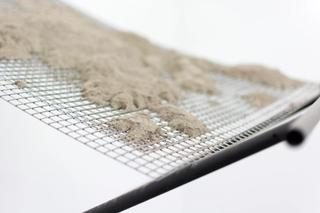



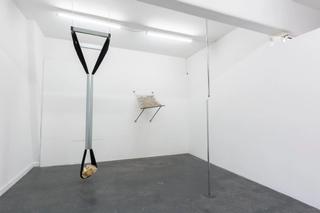



This program takes place on the land of the Wurundjeri people of the Kulin Nation. We recognise that sovereignty was never ceded - this land is stolen land. We pay respects to Wurundjeri Elders, past, present and emerging, to the Elders from other communities and to any other Aboriginal or Torres Strait Islanders who might encounter or participate in the program.
Yvette James’ practice focuses on fabricating spaces with the aim to affect the body through pre-intellectualised response. Her work strives for a level of conceptual accessibility by concentrating on individualised reactions. Informed by an amateur interest in astrophysics as well as architectural restraints, her work disrupts assumed physical reliances, creating potential responses of unrest.
Yvette completed her BFA at Monash University in 2018. Since then she has exhibited at Blindside ARI and Bus Projects, alongside participating in Hatched: National Graduate Exhibition at Perth Institute of Contemporary Art. Yvette has recently completed a residency at Popps Packing in Detroit, Michigan.
Related
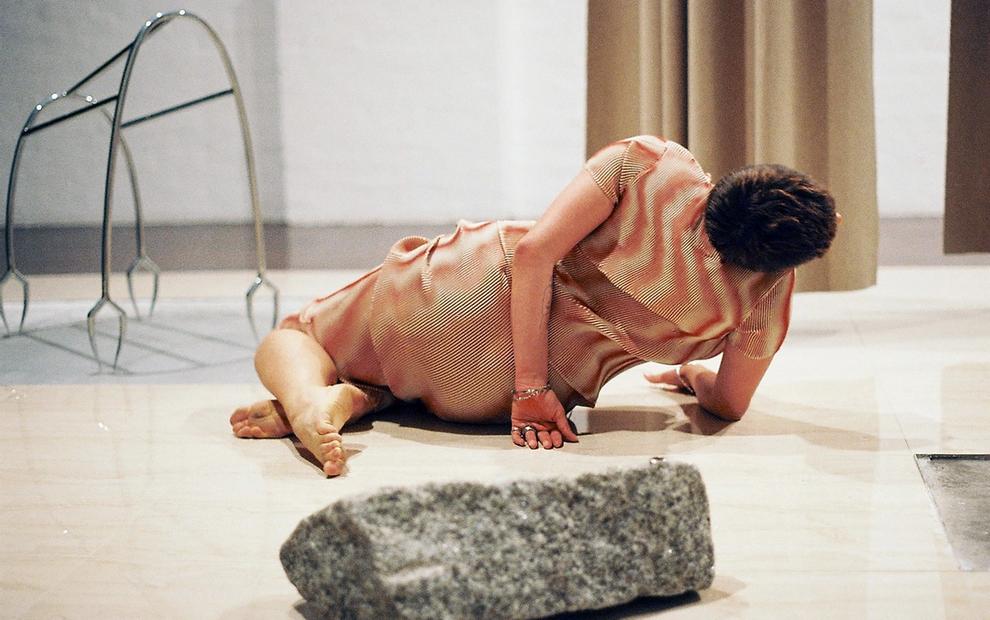
14 Feb–2 Mar 2019
Debut XV
Lauren Gostin, Andre Franco, Erin Hallyburton, Grace Carver, IchikawaEdward, Paris Fontana, Yvette James

18 Sep–5 Oct 2019
Plexus
Will Cooke, Annelies Jahn, Ham Darroch, Lieutenant + Vassallo, Nadia Odlum, Katy Mutton, Britt Salt
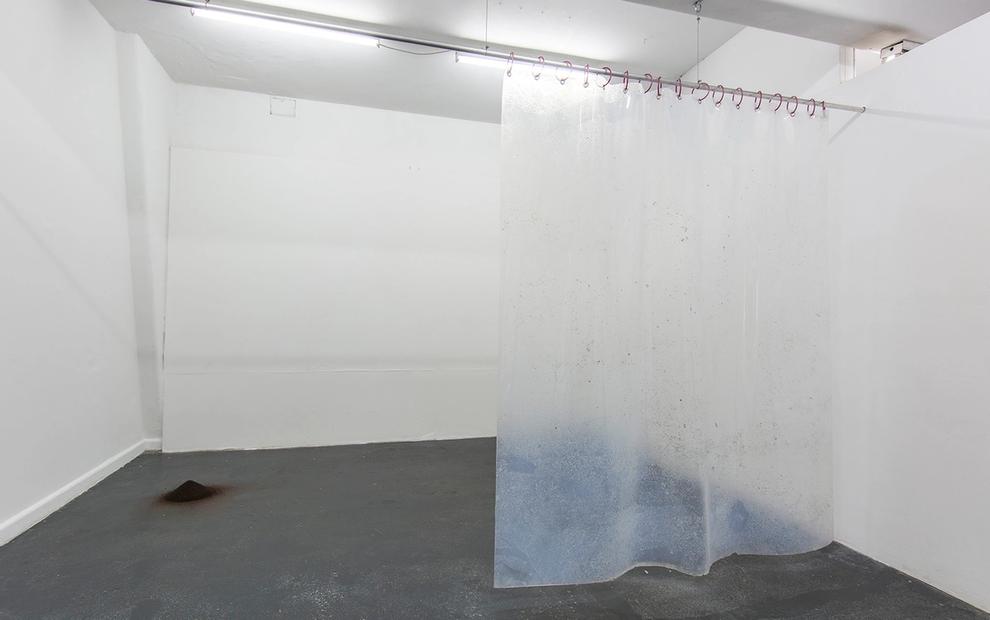
26 Jun–13 Jul 2019
There is a Wall Dissolving
Erin Hallyburton, Stephanie Hosler




